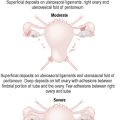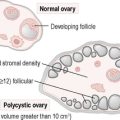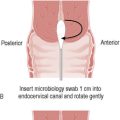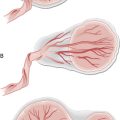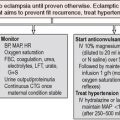15 The puerperium
Normal postnatal events
Breastfeeding
Physiology
The advantages of breastfeeding for the baby are:
The advantages for the mother are:
A small number of women are unable to breastfeed for the following reasons:
• Inverted nipples (2% incidence), which do not evert with attempts at breastfeeding
• Medications that are transmitted into breast milk and harmful to the baby
• Maternal human immunodeficiency virus (HIV) infection
• Inability to establish breastfeeding
These women may feel stigmatized by their inability to give their baby ‘the best’ type of feeding.
Postnatal check
A history should be taken to establish:
• Whether the lochia has stopped
• Whether there are any breastfeeding difficulties
• If the woman has any urinary or bowel symptoms, specifically incontinence
• The mental state of the woman. Is there anxiety or depression? How is her relationship with the baby?
• If sexual intercourse has resumed, what contraception is being used? Are there any sexual difficulties?
Contraception
• The progesterone-only pill is safe with breastfeeding and can be started immediately.
• The combined oral contraceptive pill reduces the quality and quantity of breast milk and is, therefore, contraindicated in lactating women. It should also be avoided for 6 weeks after delivery in non-lactating women due to the increased risk of thrombosis.
• Intrauterine contraceptive devices and the levonorgestrel-releasing intrauterine system can be fitted at 6 weeks postpartum, after uterine involution.
• Injectable progestogens are safe with breastfeeding, but should be delayed until 6 weeks postpartum, because of risks of erratic bleeding.
• Full breastfeeding is effective contraception for at least 6 months, as long as no formula supplements are given and the woman remains amenorrhoeic.
Further information on contraception options is given in Chapter 9.
Problems in the puerperium
Perineal wound problems
Women with perineal tears or sutures should be advised:
• To take analgesia (paracetamol and non-steroidal anti-inflammatories) as needed, for up to 2 weeks
• To keep the area clean by regular bathing or showering, without soap
• To dry the area with a clean towel or cool hairdryer
• To observe for signs of infection (increased swelling or pain, offensive discharge)
• That the sutures dissolve spontaneously over a few weeks and stitch debris may be seen during this time.
Postpartum haemorrhage (PPH)
Urinary retention
Acute urinary retention may occur after delivery where there has been:
• Failure to catheterize a woman with a dense epidural
• Failure to check for bladder emptying within 8 hours of delivery
• Lack of sensation to pass urine after spinal or epidural for caesarean section or other obstetric surgical procedure
Psychological, emotional and psychosexual problems in the puerperium
Many women find the emotional experience difficult during the puerperium. Contributing factors are:
• Sleep disturbance and tiredness
• Physical pain or discomfort from perineal or caesarean wounds
• Lack of control over the baby’s sleep or crying
• Dependence of the baby and lack of freedom
• Change in self-image from partner or lover to mother
• Fear of sexual intercourse due to perineal pain or memory of delivery
Summary
• Lochia may continue for up to 6 weeks but any offensive smell or fresh bleeding after the first few days should be investigated.
• Breastfeeding confers significant advantages to the mother and baby but care should be taken to avoid stigmatization of women who are unable to breastfeed.
• Contraception advice should be given prior to hospital discharge and at the 6-week postnatal check.
• Postnatal depression occurs in 10% of women and is distinct from ‘postpartum blues’, which only lasts a few days.
• Puerperal sepsis is still associated with serious maternal morbidity and mortality and should always be investigated and treated aggressively.
• Voiding after delivery, after removal of a urinary catheter and after an epidural or spinal anaesthetic should be ensured to minimize the risk of urinary retention and its consequences.


